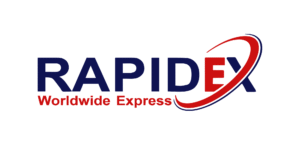In today’s construction industry, collaboration is no longer a luxury—it is a necessity. With projects becoming increasingly complex, design coordination meetings have taken center stage to ensure that architects, engineers, and contractors are aligned. However, traditional coordination methods often lead to miscommunication, clashes, and costly rework. This is where Building Information Modeling (BIM) plays a transformative role.
BIM is not just about creating 3D models; it is about enabling smarter collaboration, improving efficiency, and driving successful project outcomes. In this article, we will explore the role of BIM in design coordination meetings, its key benefits, and why it is shaping the future of the Architecture, Engineering, and Construction (AEC) industry.
What Are Design Coordination Meetings?
Design coordination meetings are structured discussions held during the planning and pre-construction phases. They bring together various project stakeholders—including architects, structural engineers, MEP consultants, contractors, and project managers—to review designs, identify potential conflicts, and align strategies.
The goal is simple: minimize design errors, detect clashes early, and keep everyone on the same page.
Traditionally, these meetings relied heavily on 2D drawings, printed blueprints, and verbal communication. While these methods served their purpose, they often resulted in misinterpretations and oversights. BIM changes this landscape entirely.
Are you searching for trusted architectural services in India to deliver precision and creativity? Partner with Designheed now.
How BIM Transforms Design Coordination Meetings
BIM provides a shared digital representation of the building, integrating architectural, structural, and MEP systems into a unified model. This model acts as a single source of truth that all stakeholders can access, update, and analyze.
Here’s how BIM specifically enhances design coordination meetings:
1. Clash Detection and Resolution
One of the biggest advantages of BIM is automated clash detection. Whether it’s a duct crossing a beam or a pipe interfering with electrical conduits, BIM software identifies these conflicts in advance.
During coordination meetings, teams can visualize and discuss clashes directly in the 3D model, allowing for quick resolutions. This reduces the risk of costly changes during construction.
2. Enhanced Visualization
A 2D drawing can be difficult for non-technical stakeholders to interpret. BIM enables 3D visualization, making it easier for everyone to understand design intent.
During meetings, teams can “walk through” the building virtually, spot potential issues, and make informed decisions. This ensures that no detail is overlooked.
3. Centralized Information Sharing
With BIM, all project data—from drawings and material specifications to schedules—is stored in one centralized platform. This eliminates version confusion and ensures that every participant in the meeting is referring to the same updated model.
This real-time collaboration builds trust among stakeholders and improves accountability.
4. Time and Cost Savings
By identifying issues early and fostering proactive decision-making, BIM significantly reduces rework and project delays. In coordination meetings, participants can also simulate construction sequencing (4D BIM) and cost estimation (5D BIM), enabling more accurate planning.
This leads to greater efficiency and financial savings throughout the project lifecycle.
5. Improved Communication and Collaboration
Communication gaps are one of the leading causes of project delays. BIM bridges these gaps by providing a common language through digital models.
Instead of abstract discussions, stakeholders can collaborate using the same model, making conversations more productive and outcomes more precise.
Searching for professional BIM consulting services in India to optimize your workflow? Designheed offers tailored solutions to fit your needs.
Real-World Example: BIM in Action During Coordination
Consider a large commercial office project involving multiple contractors and consultants. Traditionally, the mechanical engineer might deliver duct layouts in 2D, only for the structural engineer to later find that beams obstruct airflow paths. Resolving this issue on-site would mean costly changes and delays.
With BIM, these clashes are detected during design coordination meetings. The duct system and structural elements are visualized in a single 3D environment, and the clash is resolved before construction begins. This saves weeks of rework and thousands of dollars.
The Role of BIM Managers in Design Coordination
BIM coordination is not just about software—it requires skilled professionals. The BIM Manager or BIM Coordinator plays a vital role in design coordination meetings by:
-
Preparing federated BIM models for review
-
Running clash detection reports
-
Facilitating discussions between different disciplines
-
Ensuring compliance with BIM Execution Plans (BEP)
-
Documenting decisions and updating models accordingly
Their expertise ensures that BIM adds real value to coordination meetings, rather than becoming just another technical exercise.
Need reliable MEP engineering service in India to optimize your project’s performance? Designheed’s skilled team is ready to assist. Visit here https://www.designheed.com/mep-services/
Challenges in BIM-Enabled Coordination
While BIM offers numerous advantages, it also comes with challenges:
-
Learning Curve: Not all stakeholders may be familiar with BIM tools.
-
Data Management: Handling large models and datasets requires robust systems.
-
Standardization: Lack of consistent BIM standards across projects can lead to confusion.
-
Initial Costs: Investing in BIM software and training can be expensive for smaller firms.
However, these challenges are short-term compared to the long-term benefits of reduced risk, improved efficiency, and better project outcomes.
Future of Design Coordination with BIM
As technology evolves, the role of BIM in coordination meetings will only grow stronger. Integration with Artificial Intelligence (AI), Augmented Reality (AR), and Digital Twins will take collaboration to the next level.
-
AI in BIM will automate clash detection and suggest design optimizations.
-
AR and VR tools will allow stakeholders to immerse themselves in virtual design coordination sessions, even remotely.
-
Digital Twins will connect BIM models with real-time data, enabling performance monitoring long after construction is complete.
This digital transformation ensures that BIM will remain at the heart of coordination and collaboration in the AEC industry.
Get professional and accurate steel shop drawings services India tailored to your project specifications. Connect with Designheed now.
- BIM Integration in Collaborative Design Coordination Meetings
- BIM integration enhances collaboration in design coordination meetings by enabling real-time visualization, clash detection, and efficient communication.
- BIM, Building Information Modeling, design coordination, collaboration, clash detection, construction, project management
Related posts:
 Birla Noida Extension Luxury Apartments with Great Amenities
Birla Noida Extension Luxury Apartments with Great Amenities
 Making Home Refurbishment Easier with the Help of The Experts in London
Making Home Refurbishment Easier with the Help of The Experts in London
 Discover the Best Shops for Rent in Gurgaon at Good Earth Sixty9
Discover the Best Shops for Rent in Gurgaon at Good Earth Sixty9
 Commercial vs Residential: What Real Estate Agents in Gurgaon Recommend in 2025
Commercial vs Residential: What Real Estate Agents in Gurgaon Recommend in 2025
 How Real Estate Companies Are Shaping the Future of Property Buying and Investment
How Real Estate Companies Are Shaping the Future of Property Buying and Investment
 7 Common Myths About Serviced Apartments in Gurgaon Debunked
7 Common Myths About Serviced Apartments in Gurgaon Debunked
 Best Realtor Near Me – Why Homes by Harman is Your Top Choice
Best Realtor Near Me – Why Homes by Harman is Your Top Choice
 A Complete Guide to Mohammed bin Zayed City, Abu Dhabi – Lifestyle, Real Estate & Amenities
A Complete Guide to Mohammed bin Zayed City, Abu Dhabi – Lifestyle, Real Estate & Amenities




